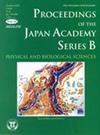磺基辅助芳香环的sigmatropic重排偶联
IF 4.6
3区 综合性期刊
Q1 MULTIDISCIPLINARY SCIENCES
Proceedings of the Japan Academy. Series B, Physical and Biological Sciences
Pub Date : 2022-04-11
DOI:10.2183/pjab.98.012
引用次数: 2
摘要
联芳基合成继续在化学合成中占据中心地位。从重磅药物分子到有机电子,双芳基化合物呈现出许多可能性,新的应用不断出现。过渡金属催化的偶联反应代表了双芳基合成的金标准,并且机理步骤,如还原消除,已经得到了很好的确立。开发利用替代机制场景的路线可以获得前所未有的二芳基结构,并扩大二芳基应用的组合。我们开发了芳基亚砜与苯酚的无金属C–H/C–H偶联反应,制备了2-羟基-2′-硫烷基二芳基。这种级联策略由间断的普默勒反应和[3,3]信号重排组成。我们的方法能够合成有趣的芳香分子,包括低聚芳烃、对映体富集的二杂[8]螺旋烯和多氟二芳基。通过我们在芳基亚砜/苯酚偶联方面的成功,以及对双芳基合成中的信号重排的深入理解,我们建立了相关的方法,如芳基亚氧化物/苯胺和芳基碘烷/苯酚偶联。总的来说,我们对未充分探索的反应机制的基本兴趣导致了获得重要的二芳基结构的各种方法。本文章由计算机程序翻译,如有差异,请以英文原文为准。
Sulfonium-aided coupling of aromatic rings via sigmatropic rearrangement
Biaryl synthesis continues to occupy a central role in chemical synthesis. From blockbuster drug molecules to organic electronics, biaryls present numerous possibilities and new applications continue to emerge. Transition-metal-catalyzed coupling reactions represent the gold standard for biaryl synthesis and the mechanistic steps, such as reductive elimination, are well established. Developing routes that exploit alternative mechanistic scenarios could give unprecedented biaryl structures and expand the portfolio of biaryl applications. We have developed metal-free C–H/C–H couplings of aryl sulfoxides with phenols to afford 2-hydroxy-2′-sulfanylbiaryls. This cascade strategy consists of an interrupted Pummerer reaction and [3,3] sigmatropic rearrangement. Our method enables the synthesis of intriguing aromatic molecules, including oligoarenes, enantioenriched dihetero[8]helicenes, and polyfluorobiaryls. From our successes in aryl sulfoxide/phenol couplings and a deeper understanding of sigmatropic rearrangements for biaryl synthesis, we have established related methods, such as aryl sulfoxide/aniline and aryl iodane/phenol couplings. Overall, our fundamental interests in underexplored reaction mechanisms have led to various methods for accessing important biaryl architectures.
求助全文
通过发布文献求助,成功后即可免费获取论文全文。
去求助
来源期刊
CiteScore
6.60
自引率
0.00%
发文量
26
审稿时长
>12 weeks
期刊介绍:
The Proceedings of the Japan Academy Ser. B (PJA-B) is a scientific publication of the Japan Academy with a 90-year history, and covers all branches of natural sciences, except for mathematics, which is covered by the PJA-A. It is published ten times a year and is distributed widely throughout the world and can be read and obtained free of charge through the world wide web.

 求助内容:
求助内容: 应助结果提醒方式:
应助结果提醒方式:


